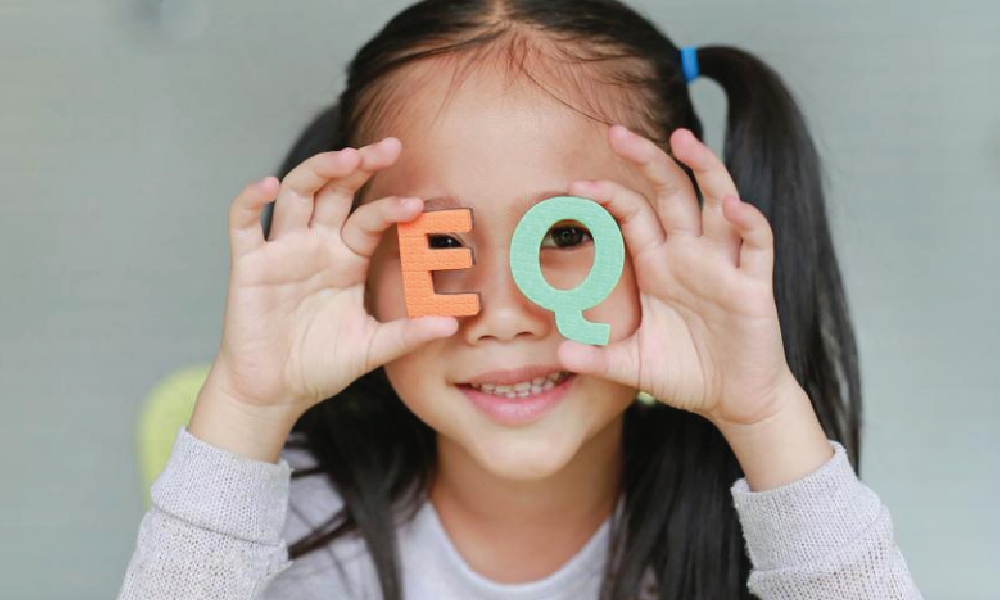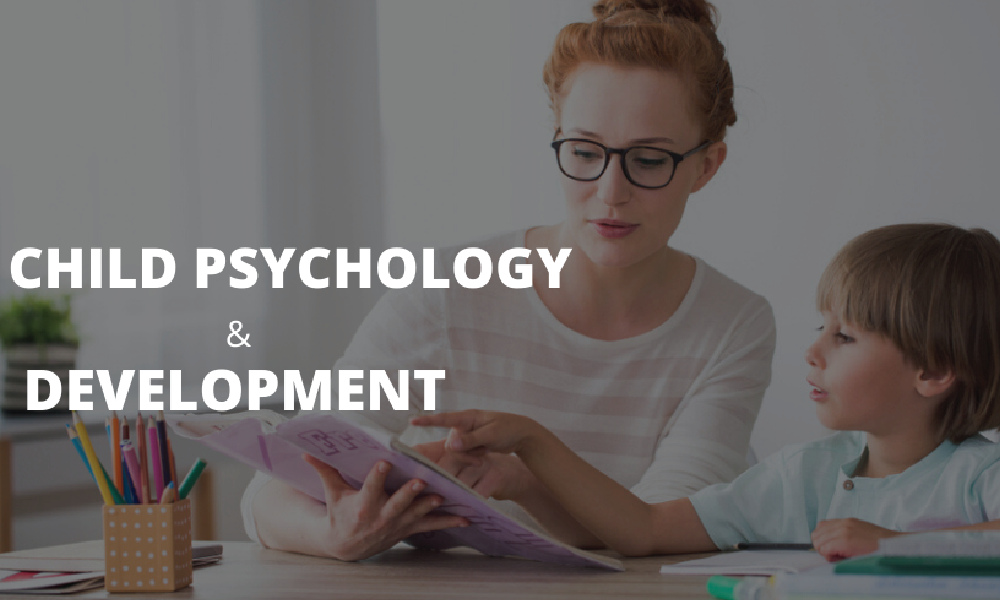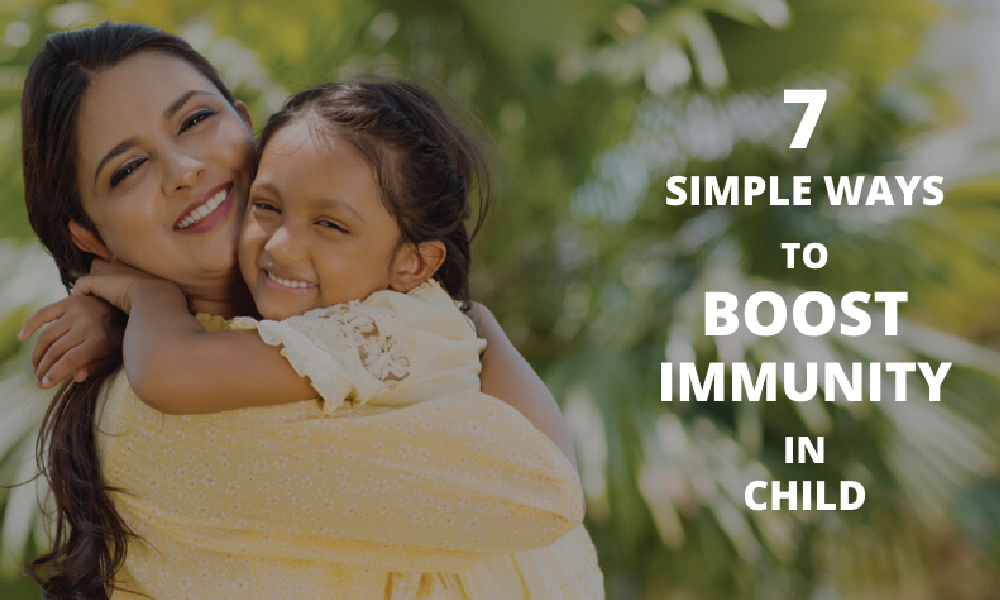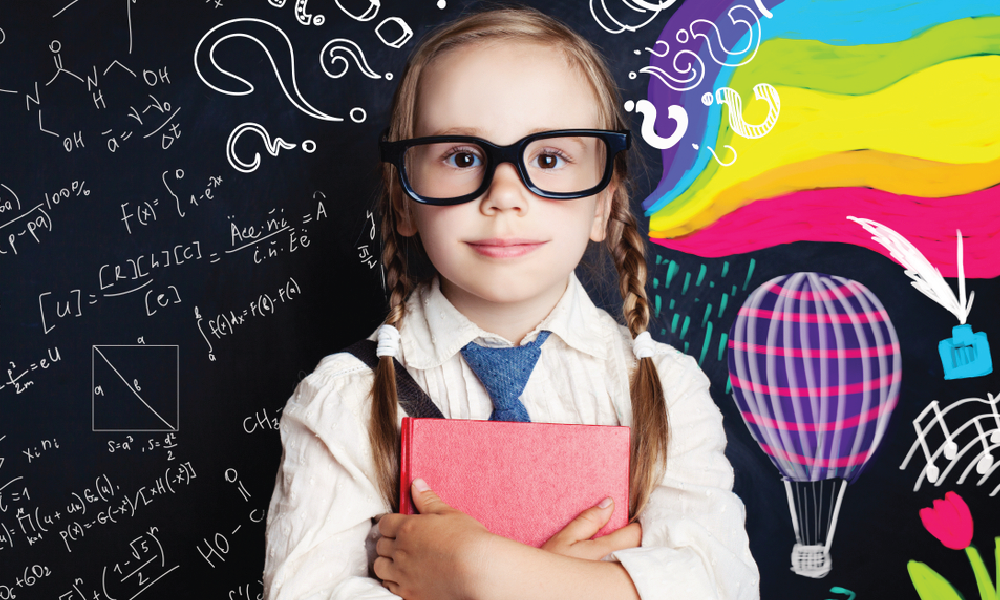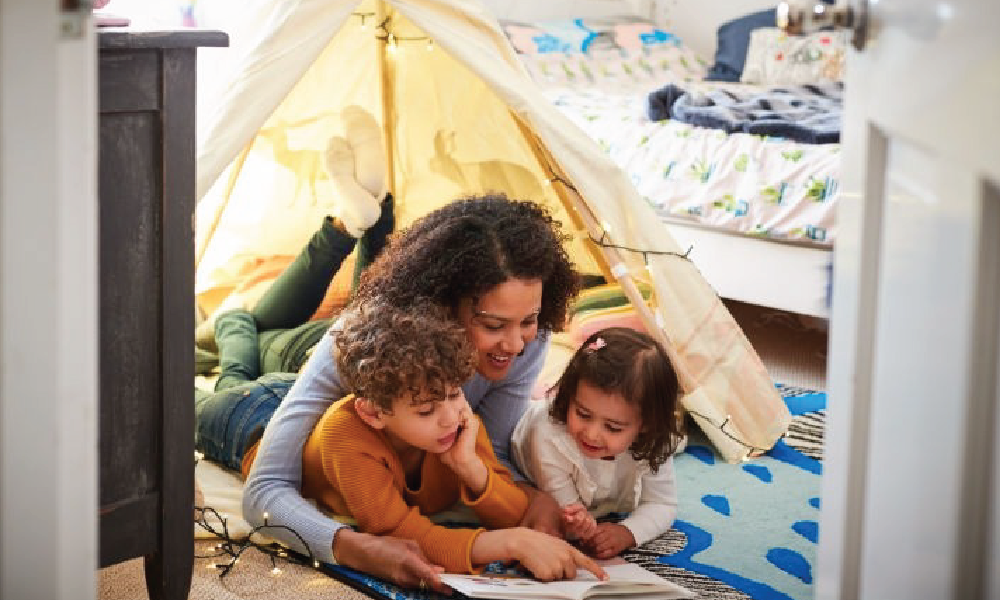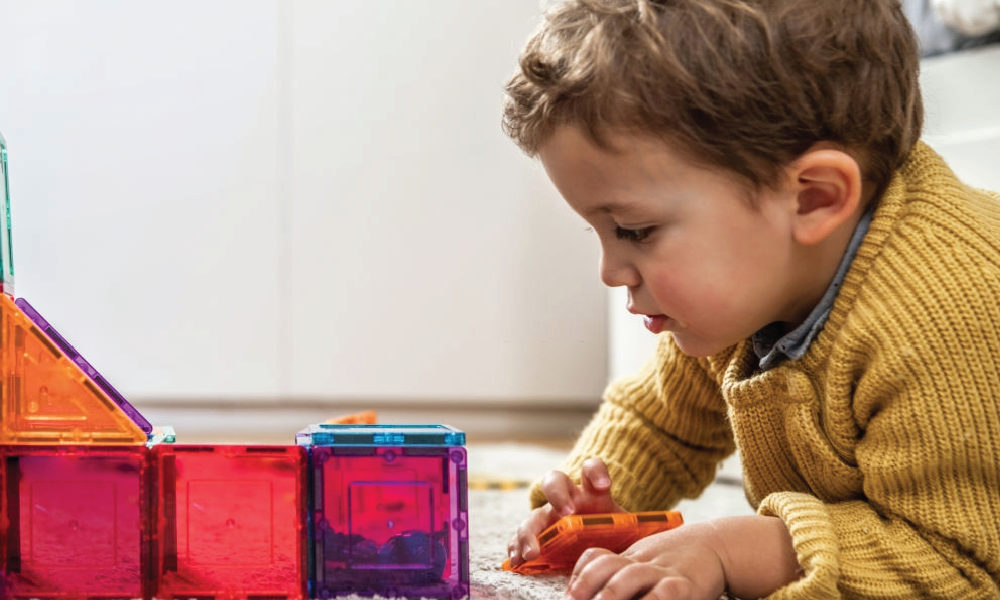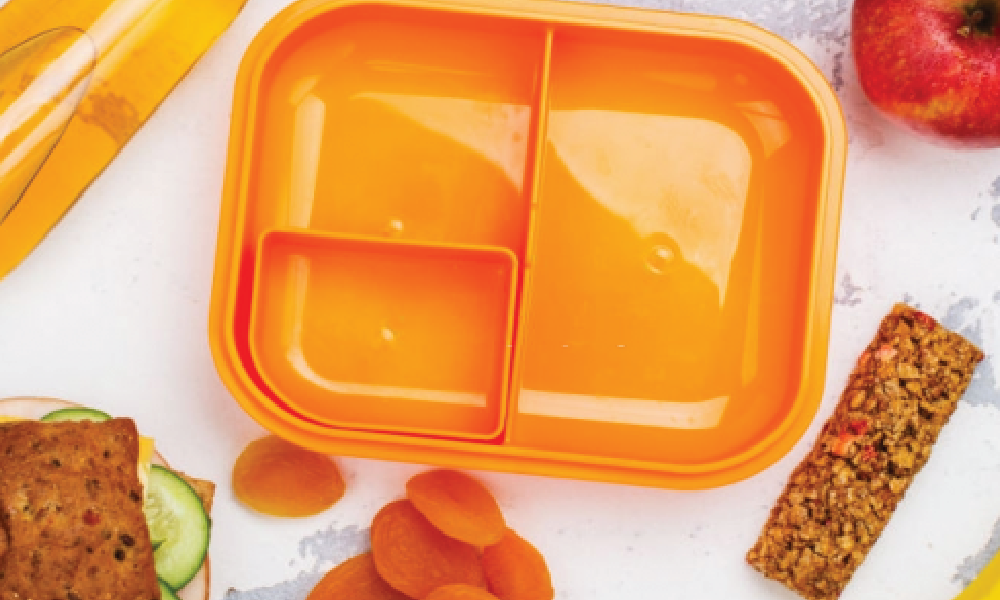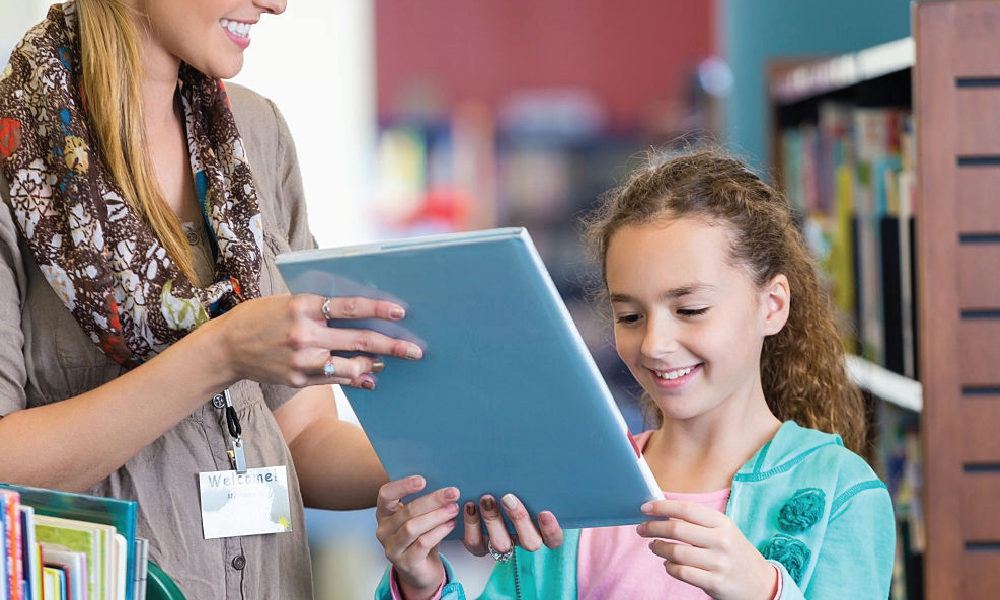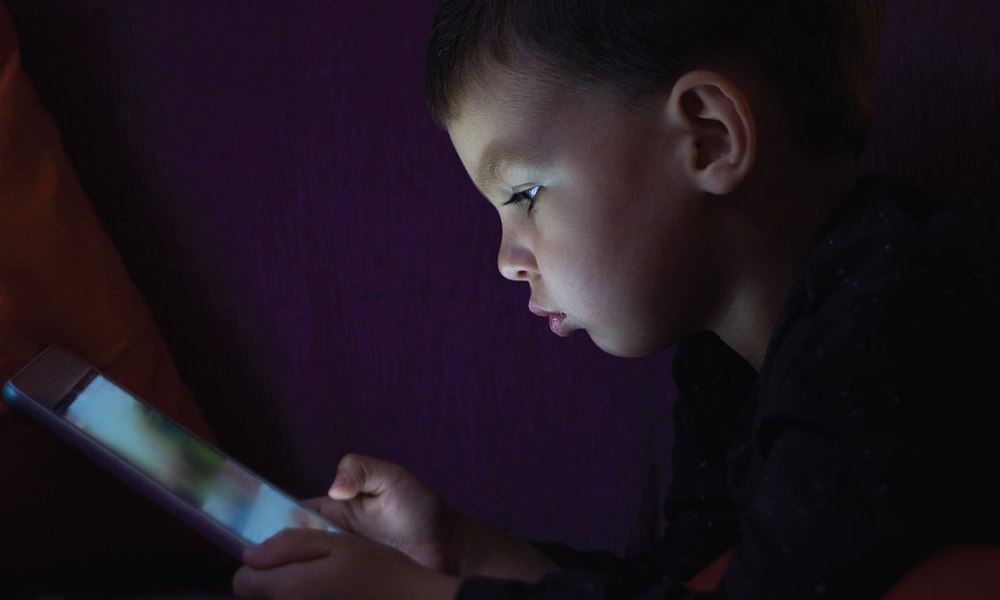Good Hygiene Habits To Teach Your Child Hygiene is one of the most important aspects of our lives, not only does it ensure we live healthy lives without illnesses but also it is an indicator of a good self-image that leads to high self-esteem. Teaching children about personal hygiene habits right from a very young age is a good idea so that they can help them take care of themselves and carry it forward into being responsible adults. Children are also more prone to infections, so stressing the importance of cleanliness can help avoid any such infections. Children have high movement and activity, whether it is at school or at home playing with toys or their friends. So, getting them to sit in one place and listen to you can appear to be a task for many parents. That is why incorporating personal hygiene lessons within playtime and while spending time with them around the house can really help the child grasp it in a fun way and practise it themselves. Here are some ways in which you can teach your child personal hygiene: Hand and Food Hygiene Start with the basics, which is washing your hands before and after every meal and after using the washroom. Parents can make use of many animations and short movies available online to teach their children about bacterias and infections that can be caused by dirty hands. Educational cartoon videos are a popular way to teach children about hygiene and moral values coupled with their parents’ counselling. Parents should also pay attention to lead by example. Show your child the good habits of hygiene by doing them yourselves like washing hands, brushing your teeth at night and bathing thoroughly. We cannot expect our children to do something that we don’t follow. When you are doing something while cooking like washing vegetables and fruits, let your child know every day “It is important to wash fruits before eating”, this way we are creating rules in their mind and they are more likely to remember it when they see us do it. Let your child also form a habit of washing his/her every time they come home from outside, sneezing, tying their shoes and meeting with a friend. Hand hygiene also includes nail hygiene which is so important as our nails can store a lot of bacteria and germs inside them. Your child’s nails should be kept clean and short at all times, and create a habit of cleaning the nails every time they wash their hands. Short nails will also avoid the habit of nail biting which is also unhygienic. Oral Hygiene Oral hygiene is very basic as well but the most important. Your child should have the habit of brushing his teeth twice a day, after waking up in the morning and before sleeping. Parents should teach the children how to brush their mouth thoroughly and also floss every day, to avoid dental cavities. Bathing and Toilet Hygiene Bathing habits should include thorough and complete washing of all body parts every day with antibacterial soap. Especially armpits, neck, legs and feet, which are areas that can deposit germs and sweat. Parents should ensure that the child is scrubbing their feet every day and cleaning them with soap, to avoid any fungal infections or smelly feet. Facial skin should be paid more attention to, as it is more delicate. Pay attention to hair hygiene as well, an unclean scalp can invite dandruff and lice. Your kids should be taught how to shampoo thoroughly and keep their scalp clean. it is all a matter of everyday practise until it is a part of your child’s life. Toilets contain the maximum number of germs in the house, parents should pay attention to the child’s toilet hygiene. This includes cleanliness after passing stool or peeing, washing their hands afterwards, keeping the toilet seat down when done and teaching them how to flush. Also Read: How To Boost Immunity in Kids Home Hygiene Creating a clean environment around you is so important to the personal hygiene regime. Your child should know the importance of a clean room and house. Little habits like making your own bed after waking up, keeping your shoes outside the bedroom and keeping dirty dishes in the sink themselves can go a long way! Inculcating personal hygiene habits for kids is not an overnight process, it takes time and consistency from the parents’ side every single day. It is important to lead by example, constantly voice the activities to create an impression in the child’s mind, and include your child in everyday activities. Good personal hygiene is crucial to form professional and personal relationships in adult life, so we must teach our kids from the start.
5 Tips To Raise An Emotionally Intelligent Child As per the normal conventions, emotional intelligence can be naturally inculcated in adulthood. But is it right to wait for it to happen organically so late? It sparks a child’s best interests at heart. Both academically & non-academically. It is the means by which children learn to manage & express emotions while developing empathy. It can be learned at any age. However, learning emotional intelligence skills at a young age has its own set of perks. Its benefits can be compared with those of terrific educational advantages. It is a way for your child to learn to manage their feelings & respect others as well. It is as important as developing an IQ, where children are staging themselves as the best in all the fields. Raising a child from an emotional intelligence perspective helps them get placed in society. It also helps develop confidence & makes a child emotionally aware & intelligent. We at Tickle Right believe that all children have the potential to learn such skills to validate each other’s feelings for good. What Is Emotional Intelligence For Kids? Emotional Intelligence (EQ) is the process of managing & expressing feelings while not overlooking others’ emotions. It demands from a child to respect others’ emotions accurately with emotional self-regulation duly. As parents, you can associate such skills with the ability to guide your child’s emotions. It’s crucial to teach your child to manage anger or any other unpleasant emotional challenges. Validating your child’s emotions in such cases helps them soothe their intense emotions. This becomes a means by which your child finds an optimistic pathway. It is to relieve negative emotions & communicating them effectively to you. Why Is Emotional Intelligence Important For Children? Emotional Intelligence lays the bedrock for cognitive & emotional converge. It taps into a child’s potential to develop empathy, logical understanding, stress tolerance, & handle conflicts. It helps perceive what others think about a particular situation & respond accordingly. The following are the varying benefits of acknowledging emotional intelligence at a growing age: Develops strong relationships Inculcates stress tolerance Builds empathy towards others Resolves conflicts & quarrels Communicates effectively Understand & manage emotions Fosters self-controlling mechanisms Wholesome well-being & high IQ How To Raise An Emotionally Intelligent Child? Raising an emotionally intelligent child who can take on challenges or conflicts headway takes time. Your child may not be born with such skills but can gain them duly. It is only possible by validating their emotions & helping them express themselves in a healthy way. Because a child feels as intensely as adults. It’s important to give your child enough time to process emotions. Beginning rightly from crying for unreasonable wishes to anger tantrums. Building emotional intelligence can help your child to talk about such instances in their own way. It can be both via a verbal & non-verbal communication methods. 1. Validating Your Child’s Emotions The ability to understand your child’s complex emotions helps deal with them accurately. As a parent, you must not dodge your child’s feelings or get angry with them. This creates a bridge between your child & their willingness to communicate with you. Validating your child’s feelings by putting a label on them can mend things easily. Help your child understand what they’re going through – anger, disappointment, shyness, pain, & others. Instead of scolding your child, you must help them pacify these emotions. In fact, positive emotions like – happiness, excitement, and joy must be given attention for psychological goodwill. 2. Understanding & Developing Empathy Being aware of others’ emotions is the best way to contemplate & empathize with them. The ability to emotionally understand what others are going through helps build better relationships. It’s a finer approach for your child during tricky times. Whenever your child is going through a negative outburst, make sure that your child knows that you’re present for them. Because as they grow up, they often set up their foot in different environments like a school. They meet other kids and build human relationships. At this point, you must speak to your kid about their new interactions. Make them emotionally aware of any unresolved feelings or issues on their mind. 3. Teach Ways To Express Differently There are several alternative ways to make sure that your little one understands different feelings. Music, art, movies, reading books, and extracurricular activities are more than a means of amusement & interest. It helps express different emotions in a creative appropriate way. When your child reads a story, the underlying message helps them understand the right response to a particular situation. Similarly, while watching a movie, a child engages with healthy drama. This pushes them to brainstorm about different characters & teach coping skills. You can also put up questions related to a character’s feelings. You can help your child be more socially & emotionally aware. 4. Be Emotionally Present For Your Child As parents, it’s your first duty to be emotionally & physically present for your child. This is an ongoing job that requires constant observation of your child’s actions. That’s because there is always a scope for improvement when it comes to building emotional intelligence. Your child may appear to be socially perfect, but it’s important to understand their in-depth feelings too. Initiating conversations about experiences that make them feel secure with you gives them a sense of fulfillment. Every child will go through their own ups & downs, but what matters is you being there for them. Your child will need special assistance at times. 5. Adopt A Problem-Solving Approach Helping your child learn how to fix problems is a great skill to acquire duly. The ability to identify a problem & figuring out how to solve it makes your child an actual problem solver. For this, it’s important that your child is socially aware of their surrounding. Assessing a particular situation to everyone’s advantage can help solve a problem peacefully.
Child Psychology And Development What is child psychology? In definitive terms, child psychology is a branch of psychology that focuses on the mind and behaviour of children from prenatal development through adolescence. Child psychology includes not only a child’s physical development but also his emotional, mental, and social well-being. Child psychologists attempt to make sense of every aspect of child development, including how children learn, think, interact and respond emotionally to those around them, make friends, understand emotions and their own personalities, temperaments and skills. Historically, children were viewed as smaller versions of adults until Swiss psychologist, Jean Piaget, made ground-breaking revelations in the field of child psychology. His discovery suggested that children actually think differently than adults. Albert Einstein proclaimed that the discovery was “ so simple that only a genius could have thought of it. ” Today, psychologists unanimously believe that child psychology is unique and complex. However, they hold different responses to some of the bigger questions in child development psychology. For e.g. Do early experiences matter more than later ones? As childhood has a tremendous impact on the adult, experts focus on the multiple influencers that contribute to a child’s healthy proliferation. They also pay attention to other variables that might lead to psychological problems during childhood. Some of these factors are self-esteem, school, parents, societal pressures, etc. Different Contexts Of Child Psychology. While internal characteristics such as genetics certainly affect a child’s development, one must also consider the influence of environmental factors such as culture and social relationships. Here are some of the major contexts that must be included in the analysis of child development psychology : The Social Context: Relationships with peers and adults affect a child’s thinking, learning, and development. Families, schools, and peer groups are essential in the social context. The Cultural Context: The culture a child is exposed to moulds his set of values, customs, thoughts, shared assumptions, and ways of living. These aspects will influence development throughout his lifespan. Culture may also play a role in the individual’s childcare, education, and familial relations. The Socioeconomic Context: Social class can also play a major role in child development. Socioeconomic status consists of a variety of factors such as a person’s level of education, his income, job security, and where he lives. Children raised in households with higher socioeconomic status tend to have greater access to opportunities. On the other hand, those belonging to the lower socioeconomic strata might have restricted access to quality education, healthcare, and nutrition. Such factors have an enormous impact on child psychology. However, we must remember that all three contexts are constantly interacting with each other. While a child may have limited opportunities due to his lower socioeconomic status, enriching and supportive social relationships and strong cultural ties may help restore equilibrium. What Do Child Psychologists Study? Child psychology encompasses a broad spectrum of topics, from the genetic influences on behaviour to the social pressures on development. The following subjects are essential to the study of child psychology : Genetics – Genetics play a powerful role in the development of a child and they interact with the environment to determine the child’s growth. For e.g. Down syndrome is a chromosomal abnormality that will affect your child’s development. Environmental influences – While biological influences strongly affect some aspects of development, environmental factors also play a role. E.g. The timing of the onset of puberty is largely hereditary. However, environmental factors such as nutrition can also affect this. Prenatal development – This is the process that occurs 40 weeks prior to the birth of a child. Genetics heavily influence prenatal development. It consists of 3 stages: germinal, embryonic, and fetal. Social growth – Through this process, a child learns how to interact with others in his environment. While getting in touch with his own individuality, he also acquires essential communication skills. Personality Development – Personality development is affected by a combination of social influences, biological maturation, and parent-child and peer relationships. It is also affected by the child’s representation of the world around him. Language – Language development is the process through which children understand and communicate language during their early childhood years. Gender roles – A child’s understanding of gender roles will undoubtedly impact the way he socializes with his peers and forms relationships. Parents should ensure they’re imparting values that support healthy gender role development. Cognitive development- This field of study focuses on a child’s development in terms of information processing, conceptual resources, perceptual skill, language learning, and other aspects of cognitive psychology. Sexual development – Human sexual development occurs in stages. At each stage, the child acquires knowledge and learns skills for sexual development into adulthood. Sexual development takes place in tandem with physical, psychological, social, intellectual, and emotional development. Also Read: 7 Exercises To Control Your Child’s Anger Child psychologists might specialize in helping children cope with developmental concerns, or they might adopt a more general approach. Either way, these professionals strive to improve the quality of a child’s life by helping him overcome potential problems. For e.g. A psychologist might work with children to help nurture a growth mindset. Child psychologists often work in practical settings such as schools and hospitals in order to foster development. Educational psychologists work with children who face difficulties in learning, understanding, or communicating with others. They might also help children with behavioural difficulties. Educational psychologists work in schools with teachers, families, and school administrators to help children who are struggling with specific educational issues. Clinical psychologists study, assess, and treat a wide range of biological, psychological and social problems that children and young people may experience in their personal lives. They often use diagnostic tests to identify children who are experiencing mental health difficulties or who are at risk of having some kind of developmental disorder, such as autism or ADHD. By observing how children of a certain age typically respond, clinical psychologists can identify symptoms of mental health difficulties, or developmental disorders, and provide appropriate treatment
How To Boost Immunity in Kids Old McDonald had a home Ee ya ee ya O And in that home, he had a child Ee ya ee ya O With a cough, cough here And an achoo! there As a parent, you must’ve often felt that the flu and stomach bugs are unavoidable, especially when your child’s immunity is in question. Such illnesses tend to be challenging and take a toll on your child’s health. Several pediatricians also agree that children are bound to fall ill. Therefore, six to eight colds, bouts of flu, or ear infections per year are considered normal. In order to shield your children from a wide array of germs and viruses present in our environment, all you need to do is adopt a few healthy habits. Here’s how to boost immunity in kids : Nutrition: Experts have stated the benefits of nutritious food time and again. They do so for good reason. Carrots, green beans, oranges, strawberries serve as wonderful immunity boosters for your child. These fruits and vegetables are rich in carotenoids i.e. immunity-boosting phytonutrients. They increase the production of disease-fighting white blood cells and interferon. Consuming 5 servings of fruits and vegetables every day is recommended for children. ( A serving is approximately two tablespoons for toddlers and 1 cup for older kids. ) The following are also excellent immunity boosting foods for kids : Whole-fat, plain yogurt – Plain yogurt is a fantastic source of probiotics i.e. the good bacteria that promote a healthy digestive tract and overall immunity. Yogurt is also packed with vitamin D and protein. They help grow, maintain, and repair every single cell in the body. You can serve yogurt by itself or top it with chopped fruits or stir it into fruit/vegetable purees. ( Tip: Avoid using sweetened varieties of yogurt. ) Sweet Potatoes – Nutritious sweet potatoes offer beta carotene – the body converts this nutrient into vitamin A, which is essential for healthy immune function. Carrots, squash, pumpkins, mangoes, and dark, leafy greens are also rich sources of beta-carotene. Avocado – Creamy and delicious, this fruit offers vitamin E, a powerful antioxidant, and vitamin B6, which helps build the cells of the immune system. The omega-3 fatty acids present in avocados aid the body in better absorbing immune-boosting nutrients. Before serving, you must ensure that the avocados are pureed or mashed well. Blueberries – This popular superfood provides an impressive assortment of nutrients. It is rich in antioxidants and vitamin C. Whole blueberries are a choking hazard. However, you can serve them blended alone or mixed with apples, bananas, pears, yogurt, or oatmeal. Sleep: Scientific studies reveal that sleep deprivation makes an individual more susceptible to illness as it reduces the natural killer cells i.e. immune-system weapons that attack microbes and cancer cells. A sufficient amount of sleep functions as a significant immunity boost for kids. While infants require up to 16 hours of sleep, toddlers need 11-14 hours, and preschoolers need 10-13 hours of sound sleep. If your child is unable to nap during the day, it is advisable to put him to bed early. Breast-feeding: Breast milk provides immunity-enhancing antibodies and white blood cells in abundance. It protects your tiny tot from ear infections, allergies, diarrhea, pneumonia, meningitis, urinary tract infections, and sudden infant death syndrome (SIDS). Some research also suggests that breast milk can enhance your baby’s brainpower. It may also provide protection against insulin-dependent diabetes, Crohn’s disease, colitis, and certain forms of cancer later in life. Colostrum, the thin yellow “pre-milk” that flows from the breasts during the first few days after birth, is especially rich in disease-fighting antibodies. If possible, mothers should exclusively breastfeed their child for the first 6 months of life. Exercise: Exercise is also an effective immunity booster for children as it increases the number of natural killer cells in the body. In order to inculcate a lifelong love of fitness, parents must act as role models. Instead of urging your child to go outside and play, try exercising with them. Some fun and healthy bonding activities include bike riding, hiking, skating, basketball, tennis, and badminton. Also Read: Brain Food for Child’s Growth Guard against germs: Even though fighting germs doesn’t technically boost immunity, it reduces stress on your child’s immune system. Teaching your children to wash their hands regularly with soap will work wonders in the long run. Pay attention to your child’s hygiene before and after meals, after playtime, handling pets, blowing his nose, using the restroom, and returning from daycare. When you’re out, carry disposable wipes with you for quick and easy clean-ups. In order to make the handwashing habit exciting, you can let your child select bright and colorful hand towels and soap in fun shapes, colors, and scents. No secondhand smoke: If you or your partner smoke, quitting would be a good idea. Cigarette smoke contains more than 7,000 harmful chemicals, many of which can irritate or kill cells in the body. Kids are more susceptible than adults to the detrimental effects of secondhand smoke because they breathe at a faster rate. Additionally, a child’s natural detoxification system is less developed. Secondhand smoke increases a child’s risk of SIDS, bronchitis, ear infections, and asthma. It may also affect intelligence and neurological development. If you absolutely cannot quit smoking, you can minimize your child’s health risks considerably by strictly smoking outside the house. Antibiotics and pediatricians: Parents tend to coerce pediatricians into prescribing antibiotics every time their little one catches a cold or has a sore throat. They believe it’ll do no harm. However, the opposite is true. Antibiotics treat only illnesses caused by bacteria but a majority of childhood illnesses are caused by viruses. Studies indicate that pediatricians reluctantly prescribe antibiotics at the constant urging of parents. This has resulted in the flourishing of a strain of antibiotic-resistant bacteria. Due to such stubborn bacteria, simple ear infections become difficult to cure as the bacteria have become unresponsive to standard treatment.
Our brain is an intricate organ that consists of two hemispheres : the left and the right. These two halves are connected by a network of neural fibres. Roger W. Sperry, American neuropsychologist, neurobiologist, and Nobel Laureate was the one who proposed the left brain vs. the right brain theory. According to this belief, everyone has one side of their brain that is dominant and determines their personality, thought, and behavior. Ergo, an individual is either left brain dominant or right brain dominant. Generally speaking, the left brain tends to control many aspects of language and logic, while the right brain tends to handle spatial information and visual comprehension. The left brain is considered to be superior when the following aspects are concerned – • Language. • Logic. • Critical thinking. • Analytical thinking. • Numbers. • Reasoning. On the other hand, the following abilities are popularly associated with the right hemisphere of the brain : • Recognition of faces. • Expression of emotions. • Fluency and eloquence in music. • Reading emotions. • Identification of colour and images. • Intuition. • Creativity. Therefore, an individual who claims to be ‘left-brained’ would be pragmatic, logical, and objective while a ‘right-brained’ person would be more thoughtful, intuitive and subjective. Even though Sperry’s contributions towards this ‘ brain lateralization’ research won him the Nobel Prize in 1960, recent scientific studies reveal that the left brain, right brain theory is inaccurate. It has been proven that a person uses both hemispheres of their brain and that there does not seem to be a dominant side. Neuroscientists have corroborated that the two sides of the brain collaborate to perform a wide array of tasks and that the two hemispheres communicate through the corpus callosum. However, a person’s brain activity does differ, depending on the function it is performing. Some of these differences exist in : • Emotion This is the domain of the right brain , in both humans and also in non-human primates. Emotions are expressed and recognized in others by the right brain . • Language The left brain is more responsible for speech production than the right. In most people, the two main language areas are found in the left hemisphere. • Handedness Left- and right-handed people use the left and right brain for different purposes. For example, a left-handed person uses their right brain for manual tasks and vice versa. We can, therefore, conclude that brain activity is not symmetrical, and it does vary from person to person. As a parent, you must understand that your child needs both lobes of the brain in equal measures. You need to ensure that both hemispheres function in tandem and in a harmonious manner. This would prove to be perpetually beneficial and advantageous for your fledgling. In a left brain world, right brain education will give your little one the required impetus to excel in their field of interest. What is Right Brain Education? Right brain education consists of programmes that employ early learning methods to stimulate and nurture the right hemisphere of the brain. This assists in developing synergy between the left and right brain, leading to enriched, holistic brain development. Humans have a very small window to extract the unadulterated potential of the right brain. Upto the age of 6, our right brain is dominant. The earlier you start right brain education , the more effective it will be. This concept puzzles many parents. How can a tiny tot soak up information massive enough to intimidate adults ? However, many are unaware of the Law Of Diminishing Learning Ability. The law reveals that an infant’s astounding ability to learn diminishes as he grows older if it isn’t stimulated. This would mean a 2 year old is capable of learning faster than a 3 year old ! Could you imagine all the wonderful things your toddler could learn before he even begins to write or spell ? Why is right brain education important? The question you should be asking is – Why not ? The advent of science and research has unraveled excellent information in the fields of brain growth. Tickle Right, our after-school programme, gives your children an opportunity to excel and lead in their respective fields of interest. An early start today will equip your child with an upper hand tomorrow. The right brain is a portal to a world of creativity and innovation. If nurtured correctly, your young one’s learning ability will flourish, allowing them to absorb new information at lightning speed ! They will develop phenomenal photographic memory abilities and extraordinary visualisation skills. With right brain education, you’ll be able to raise an intuitive,empathetic,happy,self-assured, confident individual who could attain marvellous feats. You would not only be making learning fun but also strengthening the special bond you share with your little one. Could a parent wish for more ? Benefits of right brain education There are numerous advantages of right brain education. The right lobe of the brain relies on visual and graphical stimulation. This ultimately develops phenomenal photographic memory abilities, excellent visualization skills, and astoundingly brilliant creativity. It’s no wonder that right brained children thrive in pursuits of creativity and imagination such as writing or designing. Additionally, right brain education requires a conducive and loving environment which will enhance your child’s learning ability. This enables them to absorb new information quickly and easily. They would also become accomplished problem solvers. While the left brain focuses on the details, the right brain looks at the big picture. This is known as holistic reasoning. Your child can use this ability to his advantage while making tough decisions in the future. Individuals with right-side brain dominance are also blessed with superior spatial perception. This could give them an upperhand in sports such as running hurdles. On the contrary, left-brained individuals may have less physical co-ordination. Other benefits of right brain education include heightened intuition,speed reading, high speed mass memorization, greater concentration, musical appreciation, and much more. However, the most rewarding
Engaging, At-Home Activities For Kids During Covid-19. Today, with the entire world at a standstill, one cannot help but look at the silver lining of the situation. Isn’t it astounding that this pandemic has taught not only us but also our little ones the importance of patience, hope, resilience, and awareness? If we add a little bit of creativity to the mix, we can make this time at home even more exciting and memorable for our children. Here is a list of interactive home activities for kids that will undoubtedly make playtime a treat : 1. 1-2 years A. Spider net basket activity Use a laundry basket and some clothesline strings to create fun, spider web patterns. Put the child’s favourite toys, and ask him/her to pull out and ‘rescue’ the toys. This is an excellent activity to improve their motor skills and problem-solving skills. Tip- Put in toys that the child has not played with for a while. Also put in toys, which enhance different skills. E.g., A rattle for enticing auditory skills, tactile toys, etc B. Make a bird feeder Use an empty egg carton and attach some string to it to resemble a bird feeder. Let your child pour seeds inside. To make the activity more fun, let the child mix some peanut butter and seeds with his/her hands to make a soft mixture and then fill it in the egg carton. Place the bird feeder on a nearby tree or window sill, and make the child observe it. This is a simple, nature play activity that will keep the children engaged and excited! Also Read: Right brain training for kids 2. 2-3.5 years A. Spaghetti yarn. Take different colors of yarn and cut them into the size of your palm. Please ensure that it is no longer as the children may wrap it around their necks. We recommend supervision. After you’ve made a big batch of colourful yarn spaghetti, it’s time to let the kids explore. They can use it as pretend hair or find the tiny, hidden objects in the big batch of spaghetti yarn. Make them draw a face on a piece of paper. Your child can then adorn it with different yarn hairstyles of his/her choice. Another enjoyable activity is taking balloons, decorating them with spaghetti, and using them during bath time. B. Pillow tower During these exciting home activities for kids, your tiny tots are bound to burst into a fit of laughter. An added bonus is that this activity is enjoyable for children and adults, likewise. All you have to do is build pillow forts and towers, and pretend to play with the young ones. You can also let them crawl all over the pillows. This is a great exercise to improve balance and joint proprioception. Scatter newspapers on the floor to introduce an auditory element to the activity. All children love the crinkling sound of the papers as they crawl on it. 3. 3.5 years + A. Floating Flowers This delightful experiment is the perfect way to demonstrate a scientific phenomenon called capillary action to the little geniuses in your home. Due to this action, paper absorbs water very rapidly. When the article gets wet, it swells. The effect is the blooming of the magic flower. What you need to do: Draw a flower on a piece of paper. Let your child colour it using colour pencils. Cut the flower. Fold the petals. Place it petal-side up in a bowl or small tub of water. Enjoy watching the flowers blossom. P.S. – Don’t forget to explain the science behind this to your child. B. Tie-Dye Tissue Papers This natural activity will indeed wow your tiny artist. Fold the tissue paper like a paper fan. Tie yarn or some usual string at equal distances. Let your child colour each section with a vibrant hue of his choice using sketch pens. Don’t forget to flip the fan and colour there as well! Spray some water on the tissue paper and let it dry. Once dry, untie the paper fan. Voila, your unique, tie-dye tissue paper is ready. C. Sticky Spider Web We guarantee that no other activity is better than this for indoor play. It can be done in any available doorway, hallway, or small place. Use thick cello tape to make a dense spider web. While you do this, ask your little one to hunt for scraps of paper around the house. Scrunch them up into small balls. Now all your child needs to do is the aim and throw. Ask them why certain balls stick, and others don’t. This fun challenge is ideal for getting your children excited and moving. With these home activities for kids, your tiny tots will inevitably grow, giggle, and give you lots of hugs and kisses!
Jean Piaget’s 4 Stages Of Cognitive Development Every child is unique in an intrinsic manner. Their individuality also caters to their strengths, talents, & skillset. Although, it’s absolutely normal that they learn & grow at their own pace. Swiss Psychologist Jean Piaget believes that children take an active part in the learning process. You can think of them as scientists who perform experiments. They learn about the environment by making constant observations. Jean Piaget’s theory of cognitive development centers the focus on understanding a child’s nature of intelligence. Instead of only focusing on how children acquire knowledge, the learnings of the theory suggest how children adapt to new information. During everyday errands, children come in contact with new insights. They build upon existing knowledge. It is naturally done by conforming to past experiences to blend in with the new ones. We at Tickle Right are here to make sure that your child’s cognitive development involves learning based on actions. These actions & experiences will make your child think quicker & differently. How Jean Piaget Developed The Theory? Jean Piaget is a Switzerland born psychologist of the 1800s. During his employment tenure in the 1920s, he was curious to understand a child’s psychological approach to logical thinking. This theory was inspired by an encounter with his own daughter & nephew. He wanted to perceive why children give incorrect answers to questions that require them to think logically. This led him to believe that a child’s mind differs in versions from an adult’s mind. It’s naturally perceived that a child’s mind is a minor adaptation of an adult’s mind. However, Piaget’s understanding was the first ever to put light on that a child thinks differently from the way an adult does. The scope of acquiring intelligence skills develops in various stages over time. An older child is not just quick with logical thinking as a young child. Instead, there’s a difference in their thinking patterns. Adults are not more intelligent than children. It’s just about how children think differently than them. Piaget’s theory talks in detail about a child’s cognitive development process & potential. It’s based on the actions & experiences in their early stages of life. It is then that a child builds upon the past knowledge with the present one to progress mentally. The 4 Stages Of Cognitive Development As per Piaget, a child’s intelligence develops over a series of stages. The route to mind-blowing cognitive development goes through a universal approach. Irrespective of the culture, your child will go through the same process. Only the pace may vary for them. Given below are the same 4 stages of a child’s cognitive development. 1. The Sensorimotor Stage: Birth to 2 Years The sensorimotor stage includes the development of a child right from birth to 2 years of age. The following are the prime characteristics & the developmental changes in this stage: The infant understands the world through their actions & sensations They learn about the necessary actions – sucking, grasping, listening, & looking They develop Object Permanence: Things will exist even if they can’t be seen or is hidden. This helps improve memory They realize that their actions can have an effect on the world around them Things are learned through trial & error experiences They develop cognitive abilities – representational plays, self-differentiation from the people & objects around them In this stage, a child learns about the world through sensory activities & movements. The main focus of this stage is to develop an understanding of object permanence. This suggests that an object exists, even if your baby can’t see it. This stage is more about experiences in early childhood. They may discover something new every second moment. Their basic senses & reflexes help them connect with the surrounding environment. The cognitive development in this stage also helps develop physical actions & language cues. During the end stage, they begin to representational thoughts. 2. The Preoperational Stage: 2 to 7 Years The preoperational stage entails the cognitive development of children ages 2 to 7 years. The following are the prime characteristics & the developmental changes in this stage: The child begins to give a Symbolic Thought They begin to use words & pictures to demonstrate objects They may tend to be egocentric & intuitive They develop language & thinking skills They think of things in concrete terms In this stage, a child’s memory & imagination skills are strengthened. The previous stage can be considered a foundation stage for language development. Although, the preoperational stage sparks the emergence of language skills wholly. They learn a lot from pretend plays. Yet, they often struggle with developing empathy, and logical skills, or understanding others’ points of view. Things are still very much concrete for them. The attribute of being egocentric & intuitive at this stage is another factor. It restricts a child from not thinking beyond their point of view. However, they’ve acquired the ability to represent the world internally. 3. The Concrete Operational Stage: 7 to 11 Years The concrete operational stage focuses on a child’s cognitive development from ages 7 to 11 years. The following are the prime characteristics & the developmental changes in this stage: The child learns to Think Logically through concrete events They acquire the concept of conservation They acquire logic & organization skills but are still very concrete They develop inductive logic They become less egocentric & aware of the outside world In this stage, the child becomes less egocentric. They begin to understand the perspective of other people around them. This also leads to the development of unique thoughts & feelings. The child understands that their thoughts & opinions are different from the rest. Such development is supremely marked by logical thinking & methodical manipulation. As it brings major changes in a child’s cognitive development process. They begin to figure things out in their head. This is also known as operational thinking. This helps develop a problem-solving approach for real-life roles. However,
Top 10 Brain Development Food For Toddlers & Kids A happy day must begin with a great mealtime! So you must know that your child’s brain is twice as active as that of an adult. That makes them more intriguing & active. They may often overwhelm you with a lot of questions that you may fall short of answers to because these intelligent little minds have a mountain-size bag full of curiosity. They somehow manage to be so knowledgeable at a blooming age, no wonder how. Well, the credit goes to an effective brain development exposure right from their birth. Tickle Right suggests taking both nutritious brain development food & right brain learning to crack the code for your baby’s brain growth. Please remember, it’s not okay to feed anything to your little one assuming that it would do right to do overall development. This can also make them cranky at times. So, read ahead to know what you must feed to your toddler to get them going! Nutrients & Vitamins For Child Brain Development Essential nutrients & vitamins make up for a child’s healthy brain development. These brain-boosting nutrients will be a smart start for healthy eating practices – Omega-3 Fatty Acids – Low-mercury seafood Choline – Eggs, poultry Iron – Spinach, lean meat Zinc – Peanut butter, lean meat Iodine – Milk, egg, canned tuna Protein – Meat, eggs, yogurt Folate – Spinach, avocado, orange juice Vitamin A – Egg, milk, sweet potatoes 10 Best Brain Development Food For Kids Now that we are aware of a child’s active brain development phase & the nutrients they require for brain-boosting. Let’s get into knowing the exact food items that will help them outgrow their brain potential. These best brain development food for children are often recommended by pediatricians across the world as top brain foods. 1. Salmon Instead of tuna sandwiches, go ahead with salmon fillings in sandwiches & tacos! A fatty fish like salmon is highly rich in Omega-3 fatty acids Docosahexaenoic Acid (DHA) & Eicosapentaenoic Acid (EPA). It meets the requirement of essential brain growth & its functioning. You must include it in your child’s diet as whole foods. Making salmon patties or serving the yummy soup is also a potential option. As per research, a rich source like salmon is good for transforming sharper minds. Please Remember: Deep frying the fish may lead to substantial Omega-3 fat losses. Besides, you must monitor the health & freshness of the fish. 2. Eggs Eggs are considered the best brain development food for children for a very long time. It is a great source of protein, choline (egg yolks), & other vital nutrients. Well-known to improve concentration, they play a key role in increasing the percentage of brain mass. We’re sure that you remember our parents insisting on consuming eggs every day in our developing years. However, you can present it as per your kid’s preference – scrambled eggs, egg salad, egg sandwiches, or the all-time favorite deviled eggs. Please Remember: It is recommended that young kids consume fully-cooked eggs to avoid any health risks. Such as food poisoning. If a child ages between 1-8 years & above, consuming 2 whole eggs (contain 294 gm choline) meets 100% choline requirement. 3. Green Vegetables Green vegetables are generally no child’s first choice. So, consider yourself lucky in case your little one is eating up the greens without any tantrums. Green leafy vegetables like spinach & others contain folate and vitamins that are crucial for kids’ brain health. Other than that, kale consists of antioxidants that support the growth of brain cells. It also lowers the chances of developing dementia in gray years. However, it is surely a challenge to feed greens to current-age kids. But parents, you gotta be innovative to get there. Please Remember: Pressure cooking & boiling greens can lead to substantial losses of healthy components. You can go ahead & prepare smoothies for lower losses. 4. Seafood What better than seafood for developing great brain health? None. Seafood contents are a world-renowned rich source of many nutrients. It contains vitamin-D, Omega-3 fats, iodine, & zinc. Well, iodine supports thyroid hormones & zinc is needed for cell proliferation. The other mentioned nutrients are required for brain functioning & to protect the brain against the degeneration of mental ability, resulting in loss of memory in later life. Therefore, it is good to offer low-mercury child seafood to kids. Such as clams, shrimp, salmon, and trout. Please Remember: Medical research suggests frequent consumption of fish with high mercury content can negatively impact brain function. 5. Nuts & Seeds Nuts & seeds are full of protein, essential fatty acids, vitamins, and minerals. They are highly nutritious and show the best results for improved cognitive function. As per research, consuming nuts help improve the diet quality by uplifting the overall consumption of necessary nutrients. Such as healthy fats & fiber. This also helps keep a check on the nervous system. Consumption of nuts, seeds, nuts/seeds butter, & pesto sauce can nutrify meals. All these health-friendly benefits can be related to high academic performance. Please Remember: You are free to cook the food content as it does not reduce or lead to losses of nutritional value. 6. Apples & Plums Children are infamous for demanding sweets and candy at all hours of the day. Since no parent fancies dealing with a sugar rush and the inevitable sugar crash, a healthier alternative to sate your little one’s sugar cravings is apples and plums. These fruits contain quercetin, an antioxidant known to fight the decline in mental skills. Since the fruit skin is usually nutrient-dense, it is advisable to eat the fruits without peeling them. Just wash them thoroughly before consumption. Please Remember: Going organic should be your first preference. Offering fruit skin is a must for essential nutrients. Besides, washing the fruit thoroughly is another prerequisite for healthy consumption. 7. Lean Meat Lean meat is
It seems to be a universal fact that the words ‘ children ‘ and ‘ messy ‘ are synonymous. However, one also cannot deny that the ability to organize is a valuable life skill that guarantees success even outside of school. The following organization tips will work wonders when you’re teaching your little one how to get organized : 1. Checklists : Getting into the simple habit of maintaining a ‘ to-do list ‘ will help your child keep track of his assignments, household chores, other classroom requirements, and much more. He can write his responsibilities in a small notebook or pad. He’ll feel a sense of accomplishment when he crosses something off the list. This will motivate him to finish the other tasks on his list. 2. Organize Homework : Before beginning homework, please encourage your child to number the assignments in the order they’re supposed to be done. He should start with something short and uncomplicated. At the same time, he shouldn’t leave the toughest assignment till the end. If he has a lengthy assignment that isn’t due right away, teach him how to divide it into manageable chunks. This way, he’ll have completed the task before the deadline. 3. Assign A Study Space : To help your kids get organized, you should allocate a fixed study space to them. This is where your children should study every evening. It should be quiet and free of distractions. Additionally, their study material and school supplies should be easily accessible. If you’re nearby, you will be able to monitor their progress and encourage good study habits. 4. Fixed Study Time : Your child should know that certain hours of the day are reserved for studying and homework. Selecting a time right after school isn’t ideal as your tiny tot also needs a few hours to unwind. It’s preferable to include your child in the decision-making process. On days he doesn’t have homework, he should utilize this time productively to review his lessons, read for leisure, or work on an upcoming project. 5. Keep Organized Notebooks : Your child can effectively organize his classwork by using binders or separate notebooks. In this manner, he can quickly review his study material while preparing for tests and quizzes. He should separate his notes by using dividers or colour-coded notebooks. Keeping ‘ to-do ‘ and ‘ done ‘ folders will help him organize his worksheets. A healthy habit like this will ensure he doesn’t lose essential notes due to carelessness. 6. Conduct Regular Clean-Ups : One of the most common child organization tips is cleaning school bags and notebooks every week. Old tests and papers should be kept in a separate file at home. Used stationery supplies should be replaced. Papers, wrappers and other junk should be disposed of. Doing so teaches your child the importance of cleanliness. 7. Create A Household Schedule : You should establish and stick to a regular dinnertime and bedtime. If your child gets sufficient sleep daily, he’ll go to school well-rested. It would help if you also tried to limit screentime to specific periods during the day. 8. Keep A Calendar : Another helpful organization tip is maintaining a calendar that lists the family’s commitments, timetables for co-curricular activities, holidays, family events, birthdays, exam dates, and project submissions. This will assist family members in keeping track of each other’s actions, and scheduling conflicts can be avoided. Also Read: Right Brain Training For Kids 9. Prepare For The Next Day : Before your child goes to bed, he should pack his books and school supplies, layout the next day’s clothes and accessories, and charge his devices. This will prevent confusion the following day, and he can head to school rejuvenated. 10. Be Supportive : Learning a new skill can be overwhelming for a child. As a parent, you should support your child as he navigates uncharted waters. Gently remind him to fill details in the calendar or organize his study material. The most important thing is setting an example. You should tape your to-do lists to the refrigerator, use the calendar, and layout your own clothes for the following morning. With your constant love and encouragement, your young one will learn how to get organized in no time at all!
Adverse Effects of Excessive Use Of Mobile Phones On Children Your phone buzzes. It’s another notification. Tickle Right has uploaded a new blog – The Harmful Effects Of Excessive use of Mobile Phones On Children. Isn’t it ironic that you read a blog about the repercussions of technology on a screen itself? Our world today is full of tech-savvy individuals. The utility of our modern devices cannot be debated. Centuries-old knowledge is available to us at the drop of a hat. Phone calls, text messages, and e-mails have introduced us to a new form of interaction i.e. virtual communication. However, children of this generation are growing up in a radio-frequency environment that never existed before. Continued exposure to the radiation emitted by mobile phones can adversely affect children. Harmful Effects Of Excessive Use Of Mobile Phones On Children The following are the harmful effects on a child’s health on excessive use of mobile phones. 1. Health Hazards In recent years, extensive research has been conducted to understand the impact of cell phone radiation on children. As a child’s body is undergoing changes and growth, the effects of mobile phone radiation could vary in comparison to adults. The possible health hazards posed by mobile phones are : Non-malignant tumors Children who keep mobile phones close to their ears for extended periods of time are vulnerable to the development of non-malignant tumors, especially in the regions of the brain and ears. The bones, tissues, and protective membranes for organs are still very thin in young kids. Therefore, these organs end up absorbing beyond 60% cell phone radiation. This radiation strangely affects the human body. It could also directly affect the nervous system. The World Health Organisation (WHO) has classified mobile phone radiation as a ‘possible carcinogen’. Disturbed Brain Activity The human body uses electrical impulses to communicate via the neural network. Mobile phones also primarily function on electromagnetic waves for all forms of communication. These mobile phone waves can easily penetrate into the interior parts of a child’s brain as he/she hasn’t developed a strong shield yet. Research reveals that a mere 2-minute conversation on the phone can alter the electrical activity inside a child’s brain. This erratic activity can result in changes in mood patterns and behavioral tendencies. It could also impair the child’s ability to learn and focus. 2. Academic Performance For security purposes, several schools now allow children to carry their mobile phones to class. Many students take undue advantage of this rule to chat incessantly or play games during lectures. Due to this, they fail to pay attention and miss out on important lessons. This ultimately affects their academic performance negatively. 3. Academic Malpractice Mobile phones are not only a distraction but could also be used by students to engage in academic malpractice. In order to score well, children would resort to cheating. They could use the in-built calculator, store images, information, and even share answers via text. Such behavior has been widely observed across schools and colleges. Such malpractices affect your child’s grade and also reflect poorly on his personality. 4. Inappropriate Content Like any other gadget, a mobile phone could be misused to access harmful information. Inappropriate messages and images could be shared by friends or even strangers online! Your children could be introduced to pornography at a very tender age. This would change their perceptions and thought processes. Even a moment of irresponsibility or recklessness could leave an indelible mark. ( E.g. Carelessly exchanging their own images). Remember: Once something is on the Internet, it stays there forever. 5. Sleep Disruption Texting friends, playing video games, and mindlessly scrolling through social media are some activities that disrupt your child’s sleep at night. An unhealthy pattern like this will eventually lead to fatigue and restlessness. Sleep deprivation would unfavorably influence his academic performance. Lack of sleep = Lack of concentration = Lower grades. 6. Medical Issues Today’s kids are constantly glued to their phones. Outdoor activities and physical exercise do not pique their interest. This lethargy poses multiple health risks. Your child could become obese and later develop other debilitating diseases such as diabetes and hypertension. 7. Mental Health Issues Social media and online games are today’s virtual playground, and that is where most cyberbullying takes place. Many are harassed on these platforms. By the time children inform adults of their experience, trauma has already been inflicted and the damage is done. It is unfortunate that countless children have been driven to suicide by cyberbullies. In addition, social media may induce depression and anxiety when children do not receive the online attention they expect. 6 Helpful Mobile Safety Tips For Young Children : Avoid giving mobile phones to children under 16 years of age. When your child talks on the phone, make him use a wired headset instead of placing the phone against his ear. Avoid giving cell phones to children while traveling. The metallic body of the vehicle blocks signals which causes the phone to increase its radiation to catch them. As a parent, you should set an example by restricting your own mobile phone usage. It is advisable to take extra care if a mobile phone tower is nearby since your child would be exposed to higher amounts of radiation. You should safely keep your phones out of your child’s sight at night. Takeaway A mobile phone is a learning tool whose technological prowess is undeniable. However, just like any other gadget, it is a double-edged sword that must be used with caution. To ensure your child’s well-being, you, as a parent, must regulate content and moderately restrict excessive use of mobile phones. In the end, one must remember that your mobile phone should be a friend, not a manipulative master.


